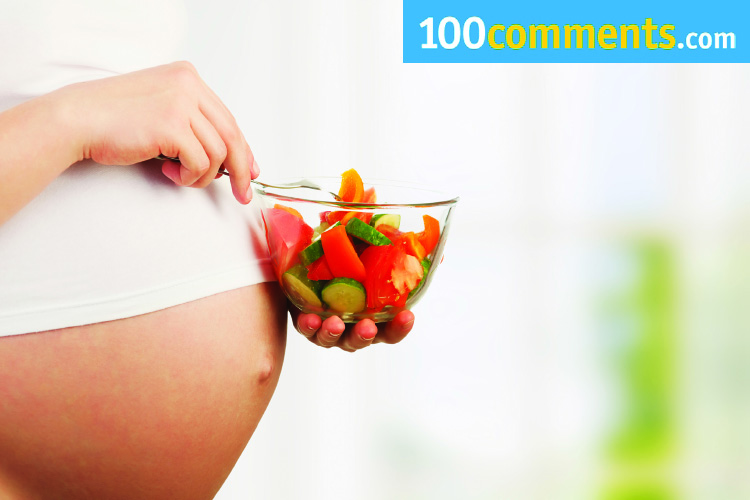As humans, one of the vital minerals we need is iron. We use it to make hemoglobin, a protein in red blood cells that carries oxygen to your organs and tissues. During pregnancy, the body has to make extra blood for the mum and her baby and so the body needs extra iron to meet this need.
Table of Contents
How much iron to take?
As soon as a woman becomes pregnant, the body’s iron requirement increases by 50 percent, from 18 milligrams to 27 mg a day. Once she has given birth, she will still need additional iron; experts recommend 9 mg a day for nursing mothers.
Preventing iron deficiency during pregnancy
If the human body is continually not able to get enough iron, it will start to use up its iron stores, depleting it in the process. This will inevitably give way to a condition called anemia, which is alarmingly quite common among pregnant women.
According to experts, iron deficiency anemia in the first two trimesters is associated with a twofold risk that your baby will be born preterm and a threefold risk of a baby born with low birth weight. As discouraging as it sounds, iron deficiency is easy to prevent and to treat.
Most doctors check in the first trimester and again in the third trimester to be sure that anemia has not developed. If your blood count is low, your doctor may recommend you take an iron pill in addition to a prenatal vitamin fortified with iron for the rest of your pregnancy.
What are the signs of iron deficiency?
When your body’s iron stores are depleted, the level of hemoglobin in your blood starts to go down, resulting in a a condition called anemia. You may not notice anything out of the ordinary at first, but as the condition worsens, you may notice obvious signs including fatigue, breathlessness, pale skin, and brittle nails.
Should a pregnant woman take a supplement?
Pregnant women are recommended to take 27 mg of iron daily as a routine dose. However, if severe morning sickness is an issue, and it’s believed that the iron supplement is making it worse, the doctor should know about it. In cases like this, a doctor might decrease the dosage or recommend the supplement in divided doses and with food.
Iron is best absorbed on an empty stomach, so take it before you eat in the morning or when you go to bed at night.
Why iron in prenatal supplements might not work?
The absorption of iron by the body is easily inhibited. One of the culprits for this is calcium, so be careful not to take your calcium at the same time as your iron supplement. As most prenatal vitamin contains calcium, you can’t depend on the iron included in the supplement to help out. Remember to not take any iron supplement at the same time you take your prenatal supplement either!
What helps and what doesn’t
Caffeine also prevents iron absorption, so wait a while to drink tea, coffee or a caffeinated soft drink after taking your iron supplement. On the other hand, Vitamin C is known to help with the absorption of iron. Try taking your iron supplement with a glass of orange juice or any other drink rich in vitamin C.
Tip: If you take your iron in the morning, take calcium or prenatal vitamins containing calcium before bed instead. If, however, the iron seems to be upsetting your stomach, switch these around and take the iron before bed when you can, hopefully, sleep off any discomfort!
Constipation, already an annoying problem for many pregnant women, may become worse with the increase of iron through supplements. To combat this, increase your fiber intake by eating lots of fruits and vegetables. Don’t forget too, drinking more fluids will help fend off constipation.
Obtaining iron through food
The best and most easily absorbed source of iron is heme iron, the kind contained in red meat, fish and poultry. Oysters and many other types of shellfish are also good sources of heme iron. However, some types of seafood contain heavy metals such as mercury, so make sure you’re not eating too much.
Non-heme iron, the kind that is less easily absorbed, is found in beans, legumes, and vegetables. This is the form of iron added to iron-enriched and iron-fortified foods. If you’re a vegetarian, you just need to eat more of these vegetables to get enough. Combining both types of iron in one meal (for example, eating a dish containing both ground meat and iron-rich vegetables) is the best way for your body to absorb the highest percent of available iron.
Sources of heme iron found in food
- 12.8 mg chicken liver, cooked
- 6 pieces of oysters, breaded and fried
- 3.2 mg lean beef (chuck)
- 3 mg clams, breaded and fried
- 1.3 mg chicken, roasted (dark meat)
- 1.1 mg chicken, roasted (white meat)
Sources of non-heme iron
- 18 mg iron-fortified cereal
- 10 mg instant oatmeal (with water)
- 6.6 mg lentils, boiled
- 6.4 mg spinach, boiled
- 5.2 mg kidney beans, boiled
- 3.4 mg tofu (raw,firm)
















